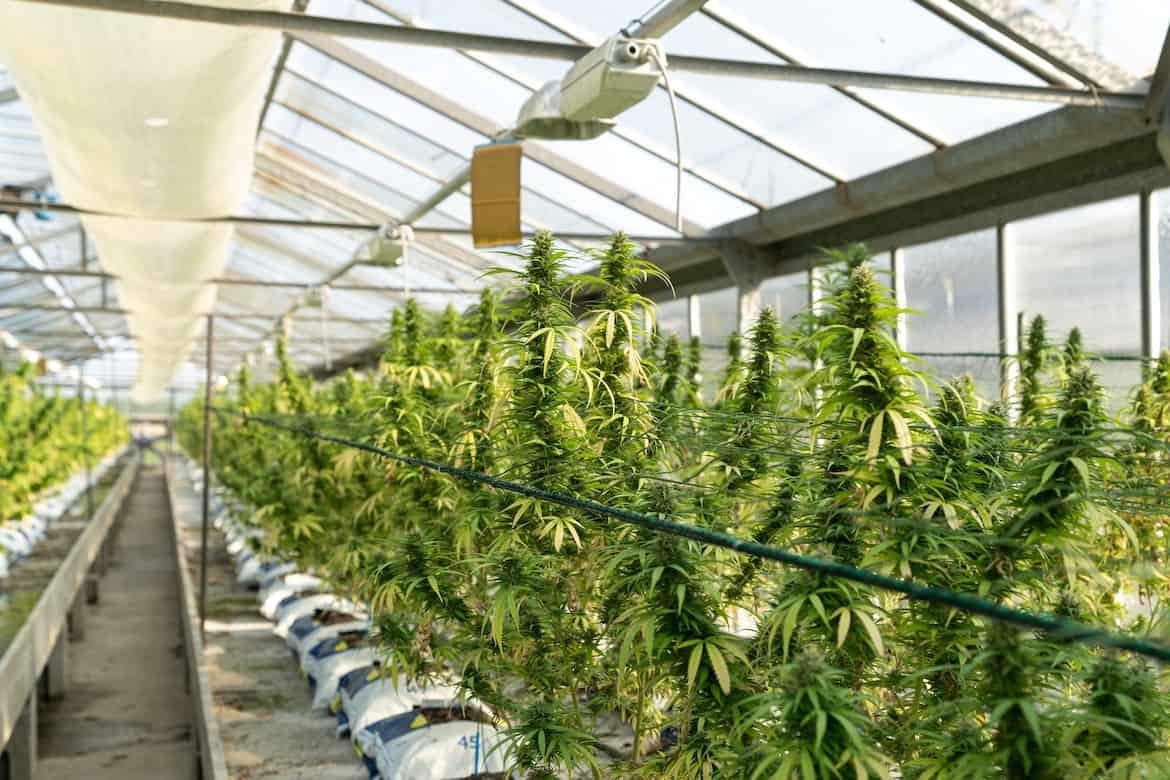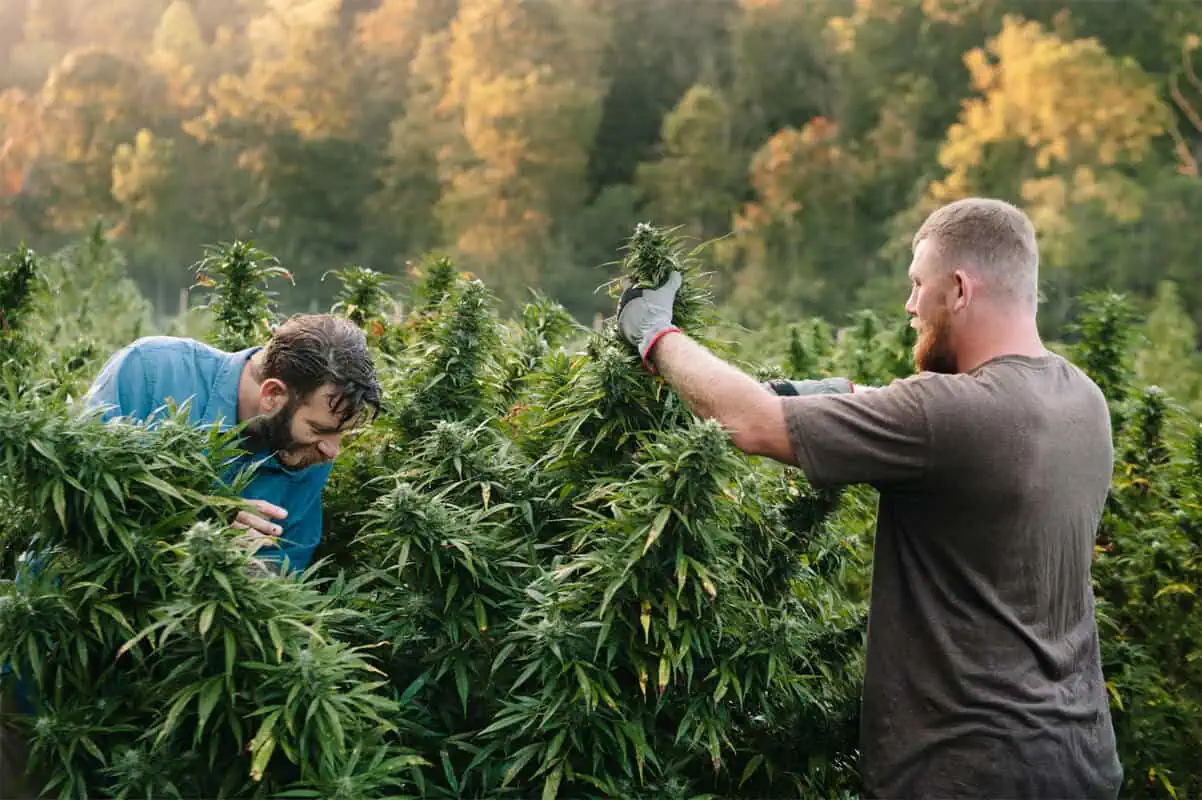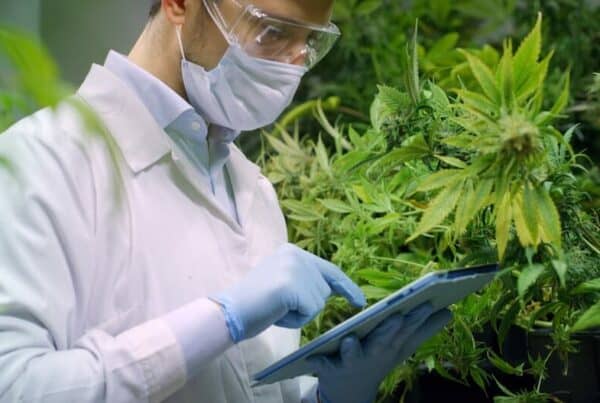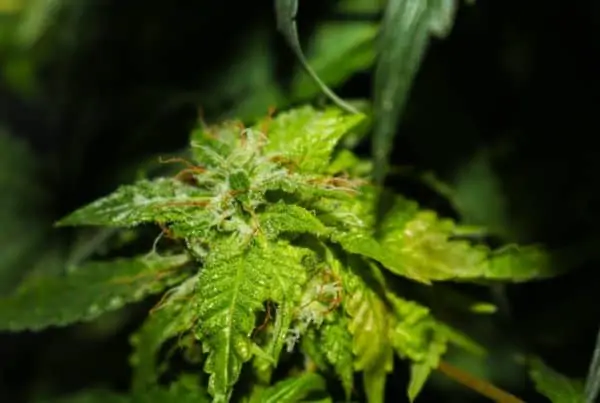TABLE OF CONTENTS
If you're an entrepreneur looking to enter the fast growing cannabis market, our guide to commercial marijuana growing can help jumpstart your vision.
Staying on top of the latest regulatory developments and consumer trends can give you a fighting chance against the competition, especially the large-scale, multi-state operators. If you're ready to take the leap and join the green rush, here's what you need to know.
Get Educated: Cannabis Industry Education
All the financial backing in the world can't replace good old-fashioned hard work and knowledge of the industry. As the fastest-growing industry in the nation, the cannabis industry is constantly undergoing change and progression.
It's up to the motivated and budding entrepreneur to read up on the latest scientific research, industry forecasts, and federal and state regulations to understand the road ahead.
Create a Business Plan
One of the first steps of creating your commercial marijuana cultivation business requires a careful consideration of every aspect of your business from financing to security to waste removal and the list goes on. You want to create a general business plan for yourself and then create more detailed versions like the ones listed below.
Investor Pitch Deck
Cannabis cultivation operations aren't cheap. From the permit application to the annual licensing cost to be employee salaries and more, running a cannabis cultivation farm can end up costing you millions of dollars.
Most likely, you'll need to acquire cannabis funding from different options including venture capital, angel investors, private lenders, private equity funding, to name a few.
To gain investor interest, you'll need to create a professional business plan that you can present to your potential investing partners face-to-face. Known as a pitch deck, this detailed and easy-to-follow deck should include at the very least the following components:
- Type of business
- Mission statement
- Business strategy
- Real estate assets
- Licensing timeline
- Value proposition
- Financing needed
- Financial plan
License Applications
Once you get some investors on board, it's time to develop your cannabis cultivation business plan that you'll be submitting along with your permit application to your state’s regulatory agency. A business plan is a requirement, especially for licensing structures that are based on merit scoring.
These business plans are far more detailed than your traditional pitch deck and can run dozens of pages to hundreds of pages long. These business plan include the following components:
- Facility map
- Security plan
- Transportation plan
- Packaging and labeling plan
- Employee training and compliance standards
- Waste product removal procedures
- Testing protocols
- Seed-to sale inventory tracking plans
- Description of operations planning and production process
Choose and Set Up a Grow Location
Selecting a cannabis cultivation center’s location requires you to consider your state and local regulations. How far do you need to be away from schools, parks, daycare centers, and other protected locations? Cultivation facilities can be located in remote locations in an indoor or outdoor growing environment. Here are some of the basics of starting a commercial grow setup.
Outdoor
Growing cannabis outdoors can give you the ability to grow plants as tall as you want that don't need to fit within a room due to the ceiling height. Keep in mind, outdoor cannabis operations aren't viable for everyone. Consider your local climate and state regulations regarding outdoor cannabis farming.
Outdoor cannabis production is vulnerable to environmental fluctuations including weather, pests, disease, and drought. On the other hand, outdoor cultivators can produce flavorful and aromatic buds using the sun and natural elements.
Indoor
If you're planning on growing indoor cannabis, you'll require a closed and secured facility with the appropriate structure outlined in the state regulations. Investing in an indoor grow operation can be pricey due to the need for a large indoor grow warehouse and energy from lights, ventilation systems, and pest management systems.
Above all, make sure you have enough space to grow the amount of plans you need and can fit their height.
Apart from having the right amount of space for all your plants, one of the most important parts to consider is the ventilation of your indoor cultivation space.
Using lighting systems, especially high-intensity discharge (HID) lights, can create a lot of heat. You need the right ventilation and fresh air flow circulation to reduce humidity, heat, and oxygen.
In addition, you need the right growing medium and containers for your indoor space. A 5-gallon pot for each plant is the standard. Anything smaller won't allow your roots to fully grow.
When it comes to a grow medium, make sure you invest in high-quality soil to produce the best plants. Consider the pH of your soil and ensure that it is between 5.5 and 6.5 pH. In addition, come up with a smart water recycling plan using wooden pallets or plastic grated platforms.
Save on Energy
When it comes to lighting and electrical costs, you are going to have to set up lighting systems, ventilation, air conditioning, humidification, and irrigation systems which all require electricity.
Generally, you will have to choose between two types of grow lights: light emitting diodes (LED) or high-intensity discharge (hid) light or more commonly high-pressure sodium lights (HPS), a type of HID.
HPS lights are believed to provide a more reliable form of lighting for indoor facilities but at a higher energy cost compared to LEDs. With all the electrical operating costs required to manage a cannabis grow facility, it's important to think of money saving ways to get down your bottom line without sacrificing the quality of your cannabis.
- Whether you're growing indoors or outdoors, investing in solar energy may pay for itself in the long run. Nowadays, it's become more affordable to base your operations on solar energy. In addition, some localities are incentivizing solar and renewable energy sources and charging for carbon emissions and energy credits to limit the increased energy use of cannabis cultivators.
- Keeping in line with sustainable practices, recycling water or collecting rainwater are excellent ways to save water and money. Some companies are investing in closed circuit desalination (CCD) or reverse osmosis water systems. These systems are able to purify water from municipal sources and can recover almost all of the waste water. If you live in a climate that gets a lot of rain, investing in rainwater collection and storage can help you save on water.
- Going green with a greenhouse facility can save you money compared to growing in a warehouse. Investing in a sustainable cultivation facility from the get-go can save you money on energy costs in the long run.
Cultivation Security
Cultivation security is of critical importance, especially when it concerns state regulators. As a mainly cash-only industry, the risk for theft and loss becomes greater. State security regulations vary from state to state. Here are some of the most common security requirements for cannabis cultivators:
- Building access control
- Video surveillance systems
- Theft and loss of product reporting
- Record keeping of personnel information and inventory
- Functional alarm system
- Secured storage system
- Seed-to-sale tracking system
Sourcing Seeds and Clones
Seeds or clones or both? Each type of growing method comes with its own advantages and disadvantages. Consider the reliability of your source and the quality and origin of your seeds and clones.
Seeds can give you greater control over the plant growth but take a little longer to grow compared to clones which have skipped the germination phase but are more susceptible to disease and stress when transplanting.
Consider what types of seeds you want. Do you want regular, feminized, or autoflowering seeds. Feminized seeds are great if you want to grow female cannabis buds but they can be more expensive than their counterparts.
Regular seeds can be more accessible but you may end up with male plants that can pollinate your crop if you're not careful. Autoflowering seeds can begin flowering on their own without the need for a change of light cycle. While they can be small, their fast-growing nature can yield many harvests throughout the year.
“
There are over 300,000 jobs in the cannabis industry. CTU trained me for one of them!

Makes $24.50 @ THC +
Cannabis Training University: Get Certified
Entering the cannabis industry can yield huge rewards, but also is rife with many obstacles. Give your and your team a leg up by enrolling in Cannabis Training University.
Our complete online cannabis courses cover cannabis cultivation practices that can teach you how to become a legal pot farmer, even if you're not an expert grower.
In addition, you'll get a comprehensive understanding of other segments of the industry including extraction, cooking, medicine, and more. What are you waiting for? Start your dream cannabis business today.
Growing Weed at Home
To grow weed at home in a small setup check out the choices at A Pot for Pot. Simple and low budget marijuana grow kits for growing weed at home.

Luis Cordova
Luis Cordova is a distinguished author, and renowned expert in cannabis cultivation, who possesses a Master's degree in Plant Biotechnology and Pharmaceutical Science. As a valued contributor to highly esteemed publications such as Cannabis Training University and Maximum Yield Magazine, Luis has emerged as a trusted source of guidance and knowledge in the cannabis industry. Having written thousands of informative articles, Luis is widely recognized for his comprehensive expertise on cultivating cannabis, both indoors and outdoors.












 Jeff was involved in an accident where he endured a traumatic brain injury. He had a week-long stay in ICU where brain surgeons
Jeff was involved in an accident where he endured a traumatic brain injury. He had a week-long stay in ICU where brain surgeons  100% risk free money back guarantee within 48 hours after purchase if student has not completed any of the courses or exams.
100% risk free money back guarantee within 48 hours after purchase if student has not completed any of the courses or exams.